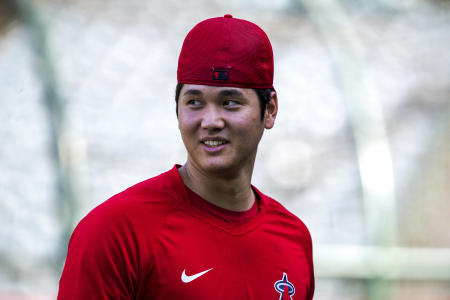
- ARAB NEWS
- 29 Apr 2024

TOKYO: Shohei Ohtani is doing things no other player has ever done, a point of pride for Japanese like Fumihiro Fujisawa.
Fujisawa is the president of the Association of American Baseball Research — similar in Japan to SABR, the Society for American Baseball Research. So he knows the numbers. But he has trouble recognizing Ohtani, who is built like a tight end in American football.
“In the last five years his body has become bigger and stronger. We see that he’s become an American — not a Japanese,” Fujisawa said.
There have been physical changes, added maturity and cultural adaptations. But make no mistake, Ohtani is “Made In Japan” — 100% — with roots deep in the Japanese countryside.
American Robert Whiting, who has written bestsellers about baseball in Japan, views Ohtani as the result of 150 years of baseball evolution. An American professor in Tokyo in 1872 introduced the game, which is known in Japanese as “yakyu,” or “field ball.”
Ohtani follows two other milestone players — pitcher Hideo Nomo, who joined the Dodgers in 1995, and Ichiro Suzuki, who has more than 3,000 hits and is likely headed to Cooperstown when he becomes eligible in 2025.
But there were always qualifiers with those two, and with others. When Nomo excelled, some dismissed him as only a pitcher. Japanese could pitch — they were technically proficient — but couldn’t make it as position players. Then Ichiro came along. Well, he could hit but not for power.
Now comes Ohtani. He pitches, he has power and he’s one player, not two. No asterisks or footnotes needed.
“Ohtani can defeat Americans on their own terms, or the Latin Americans for that matter,” Whiting told the AP. “I mean, he’s bigger than most of them. He’s stronger than most of them, plus he’s pitching every five days and he’s hitting at the top of the order every day. You can make the argument that Ohtani is the best baseball player in the history of the game just because of what he did last year and this year. You could argue that he deserves to be MVP every year as a top-10 hitter and top-10 pitcher.”
No argument from Astros manager and AL All-Star manager Dusty Baker, for whom Ohtani will lead off as the designated hitter in Tuesday night’s All-Star Game.
“He’s not just an All-Star, he’s a megastar,” Baker said.
Whiting is the author of the bestselling book “You Gotta Have Wa,” which looks at Japanese culture through the prism of sports. Another book, “The Samurai Way of Baseball,” follows the career of Ichiro, who was Japan’s most famous player until he retired in 2019. It was also titled “The Meaning of Ichiro.”
Ohtani came up in Japan’s highly regimented baseball system at Hanamaki Higashi High School in largely rural Iwate prefecture in northeastern Japan. Blue Jays pitcher Yusei Kikuchi attended the same high school a bit earlier.
As a teenager, Ohtani constructed an 81-box development chart detailing his goals. The step-by-step process is well known in Japan, and so is Ohtani’s own chart. He lists baseball areas for improvement, but also the mental and personal side.
He specifies, among other things, that to improve he needs to read books, clean the room, improve the slider, get the fastball up in the 100 mph range — and be trustworthy.
“Ohtani was raised in this Japanese, martial arts-inspired training system where you join a baseball team and you play year-round. It’s not a seasonal thing like the States,” said Whiting, who has lived on and off for 60 years in Japan.
“Ichiro in his first year in high school was probably the best player on the team, but he couldn’t play. He had to do the laundry and cook the meals. He’d get up in the middle of night and practice his swing. The same thing with Ohtani. He was cleaning toilets in high school during his first year.”
This is not that unusual. Public schools in Japan have limited cleaning staffs, so students do it to learn discipline and humility.
Ichiro had an edge, often defying the conventions of Japanese culture. The Japanese phrase “deru kugi wa utareru’” captures him: “The nail that sticks up gets hammered down.”
Ohtani appears to be the opposite — polite, soft-spoken and discreet, a player whose only focus seems to be baseball. There are few reports about any social life.
“The guy is totally committed,” Whiting said. “It’s not too much to call him a modern-day warrior monk.”
AP